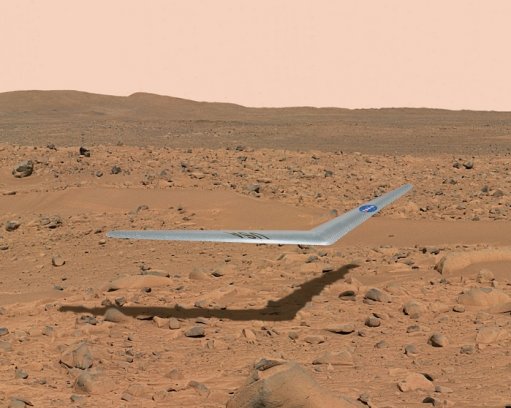
Solvay materials airborne on unique wing structure of MC-21 aircraft
The Prandtl–m aircraft will be made of composite material, either fibreglass or carbon fibre, allowing it to better recover from the unusual conditions of an ejection.

10th July 2015
Innovation in Textiles
|
Washington, DC
A prototype of the Preliminary Research Aerodynamic Design to Land on Mars, or Prandtl-m, is planned to be ready for launch from a high altitude balloon later this year, NASA reports.
The Prandtl–m will be released at about at 100,000 feet altitude, which will simulate the flight conditions of the Martian atmosphere, explained Al Bowers, NASA Armstrong Chief Scientist and Prandtl-m Program Manager.
“The actual aircraft's wingspan when it is deployed would measure 24 inches and weigh less than a pound,” said Al Bowers. “With Mars gravity 38% of what it is on Earth, that actually allows us up to 2.6 pounds and the vehicle will still weigh only 1 pound on Mars. It will be made of composite material, either fibreglass or carbon fibre. We believe this particular design could best recover from the unusual conditions of an ejection.”
“The aircraft would be part of the ballast that would be ejected from the aeroshell that takes the Mars rover to the planet,” Bowers said. “It would be able to deploy and fly in the Martian atmosphere and glide down and land. The Prandtl-m could overfly some of the proposed landing sites for a future astronaut mission and send back to Earth very detailed high resolution photographic map images that could tell scientists about the suitability of those landing sites.”
“It would have a flight time of right around 10 minutes. The aircraft would be gliding for the last 2,000 feet to the surface of Mars and have a range of about 20 miles.” Before that happens, a configuration will be developed for the first of three tests here on Earth.
“We have a number of summer community college students coming that are going to help us design and build the aircraft that will complete the first phase of the mission,” Bowers said.
“We're going to build some vehicles and we are going to put them in very unusual attitudes and see if they will recover where other aircraft would not. Our expectation is that they will recover. As soon as we get that information, we will feel much better flying it from a high-altitude balloon.”
In fact, Bowers credited the idea of the Prandtl-m to a brainstorming session with colleague Dave Berger, a NASA Armstrong aeronautical engineer, who specializes in flow physics and propulsion and works with the Education Office.
A second research flight from a balloon is planned for next year and would feature an aircraft capable of returning to the launch site on a flight that could be as long as five hours as it glides back to Earth, he said.
“We will do the same thing again with a balloon flight to about the same altitude,” said Bowers. “On that mission Prandtl-m would actually be inside a CubeSat container. The balloon would drop the CubeSat container and then the aircraft would deploy from the container right after the drop, unfold and fly away.”

Business intelligence for the fibre, textiles and apparel industries: technologies, innovations, markets, investments, trade policy, sourcing, strategy...
Find out more